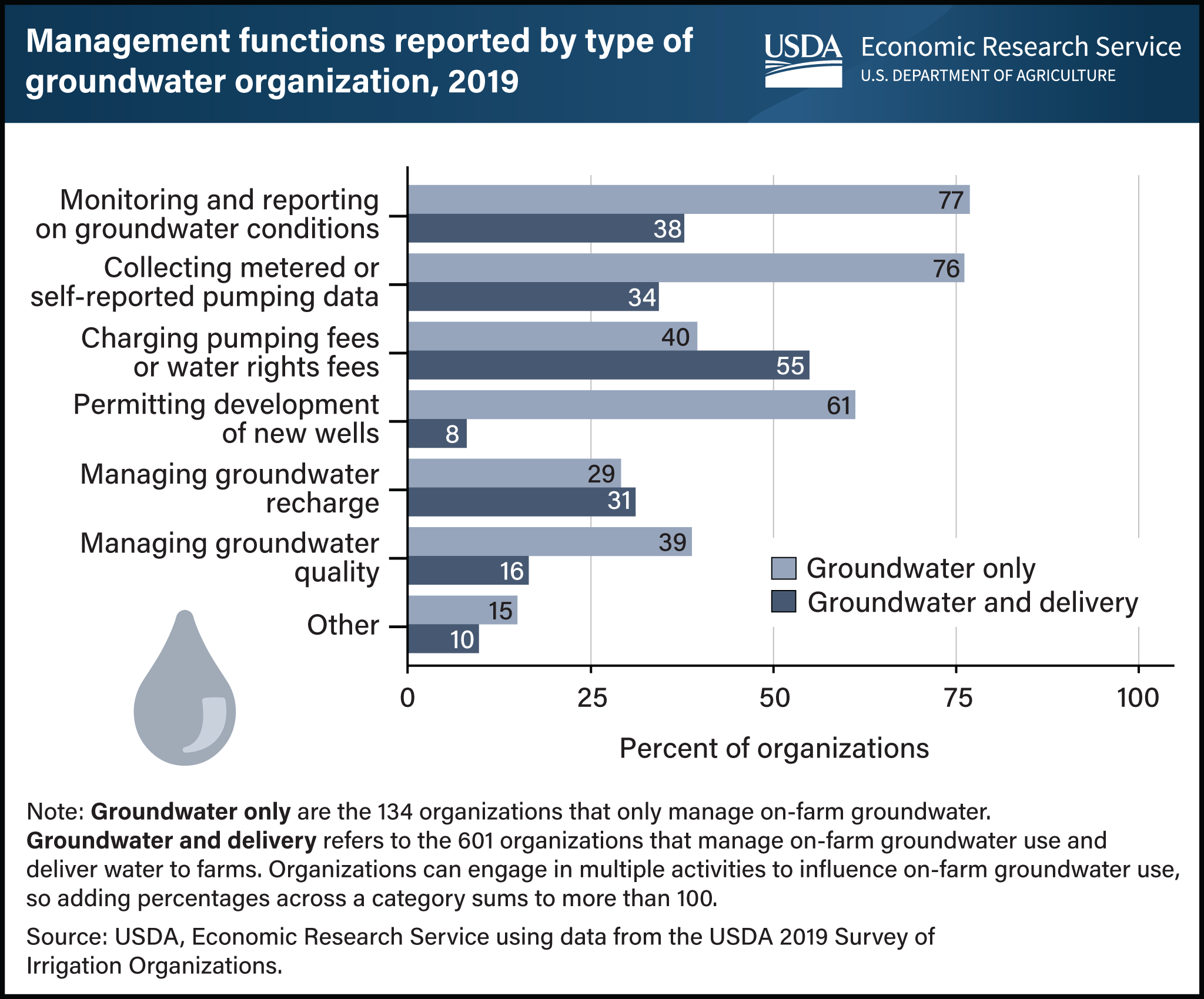Primary role of groundwater management organizations varies
- by R. Aaron Hrozencik
- 7/12/2023

Groundwater management organizations are local entities that influence on-farm groundwater use through statutory, regulatory, or other powers. USDA, Economic Research Service (ERS) researchers studying irrigation identified two broad categories of groundwater organizations during a 2019 survey: those that influence only on-farm groundwater use (“groundwater only”) and organizations that both influence on-farm groundwater use and deliver surface water to farms (“groundwater and delivery”). More than 75 percent of “groundwater-only” organizations monitor groundwater conditions and collect pumping data. A smaller proportion of “groundwater and delivery organizations” monitor groundwater conditions or collect pumping data (approximately 38 percent and 34 percent, respectively). Charging pumping or water rights fees is a relatively common function among “groundwater and delivery organizations,” with 55 percent of these organizations charging fees compared with 40 percent of “groundwater only” organizations. Issuing permits for the development of new wells is also a common management function, particularly among “groundwater only” organizations. About 61 percent of “groundwater only” organizations engage in permitting, while 8 percent of “groundwater and delivery organizations” do. According to USDA data, about 65 percent of all irrigated U.S. acreage relied on groundwater as a primary or secondary source of water in 2018. This chart appears in the ERS report Irrigation Organizations: Groundwater Organizations, published in April 2023.

